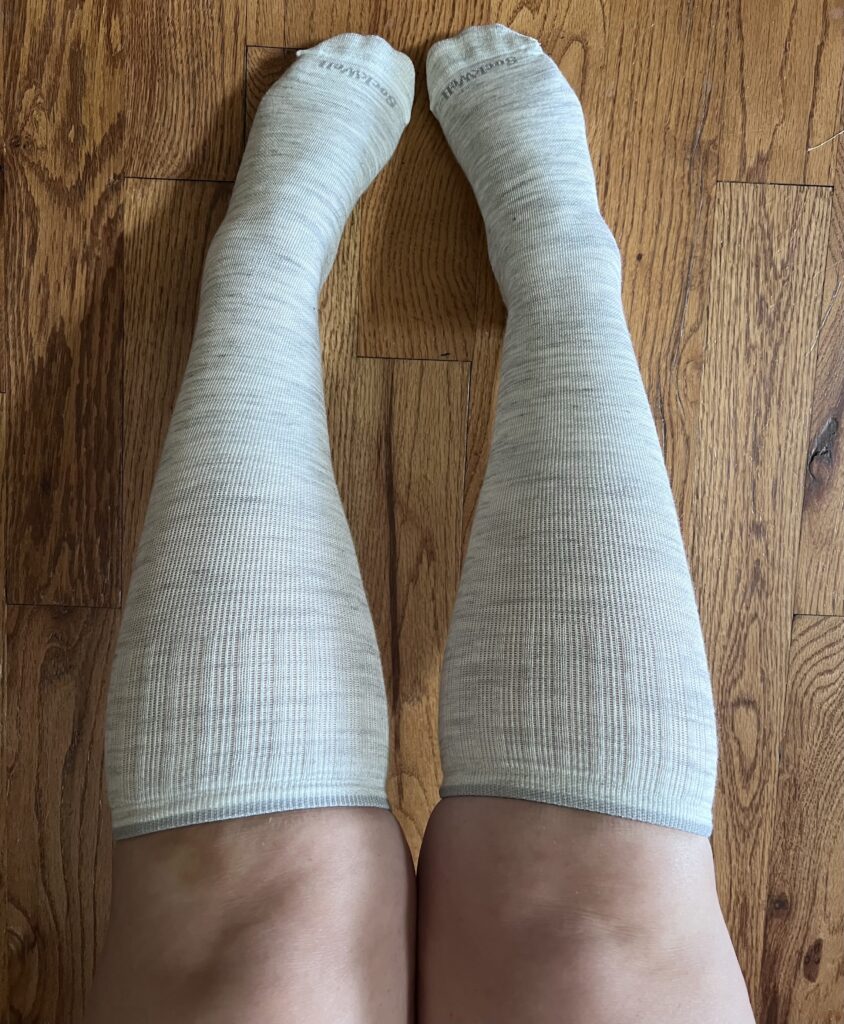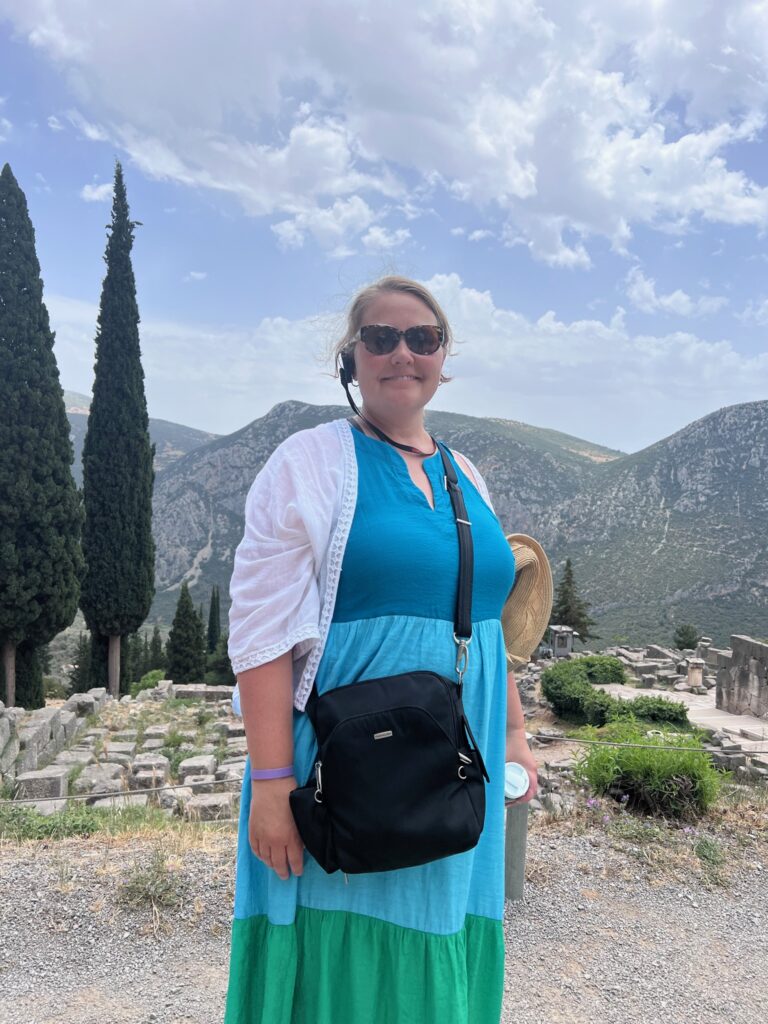Over-the-counter compression socks: What to know and how to wear them
This post contains affiliate links, As an Amazon Associate I earn from qualifying purchases
Over-the-counter compression socks/TED hose are not new to me. Working in occupational therapy I’ve worked with many clients on how best to put on the tight socks/hose. These were always prescription grade prescribed by a doctor after surgery or due to illness. But over recent years, there have been many over-the-counter compression socks come out with athletes and regular travelers swearing they help with any number of ailments and recovery. But there are things to know and consider before you don a cute new pair of compression socks such as who they are best for, what to consider when ordering them, how to wear them, and who they are NOT for.
I first put compression socks to the test on a recent trip to Europe. I wore them on an overnight flight and was happy to arrive the next morning without any swelling and my legs feeling good. My daughter has POTS and had already been using them on and off and found them to be helpful to her in reducing dizziness throughout the day when standing. So what exactly are compression socks?

What are compression socks?
Compression socks are tighter than regular socks, usually being tighter at the ankle and lessening as they go up the calf. They are designed to squeeze the ankle and lower leg to promote circulation. So they improve blood flow, reduce swelling, and decrease pain in the lower leg.
This is beneficial if you are at high risk for blood clots or have a circulation disorder. And of course, when flying in particular your risks go up. But whenever we are sitting a lot and for long periods we are at risk for lower leg swelling and pain. So compression socks are beneficial for anyone on long flights or car rides.
So benefits are:
- Reduced swelling in the lower leg, ankles and feet
- Increased circulation
- Less dizziness when standing
- Preventing blood clots
- Reduced pain and discomfort in the lower leg, ankles and feet
- Body temperature management due to improved circulation
How to buy
There are a few things to consider when ordering or buying over-the-counter compression socks.
First, decide the length you want. You will find they make ankles, below the knee and over the knee. Below the knee and above the knee are best for full benefits. Ankle socks are designed more for arch support and reducing foot fatigue during activities. The length is also about comfort. So you may need to try different options to decide what is best for you.
Next, look at the compression graduation. You’ll see in the description numbers like “15-20 mmHg.” This tells you the level of compression the sock offers. The higher the numbers the tighter the squeeze basically. So if you haven’t worn them before I would recommend starting with a lower compression graduation.
Another consideration is calf size. Some brands have socks designed for wider calves and some do not. I highly recommend measuring your calf and following the sizing guidelines. Having socks that are too tight on your calf can defeat the purpose and will actually cut off your circulation. So look carefully at the sizing guidelines before buying.
Last, look at what they are made of. If you have skin conditions or allergies make sure you pay attention to the different materials. To get the compression most of the socks are made of multiple materials. This is not that different from most socks today but these are going to be snug against your skin so you want to be sure they are of a material you can tolerate.
How to wear compression socks
The compression socks we are discussing here are not meant to be worn overnight or all day. Now, for an overnight flight, you are fine because you are not wearing them every night or lying down, but there is no benefit to sleeping with them on regularly when lying down.
You also need to make sure they are smooth and not bunch up or rolled over. This can cause restriction of circulation instead of promoting circulation so take the time to put them on properly. And make sure they don’t roll down as you are wearing them. This means they are not the right size.
Pay attention to your skin. If they are sized correctly you should have no irritation or bruising. But this can happen so another reason to take them off and let your skin breathe when you can.
Who are compression socks NOT for?
Compression socks are NOT for people with Peripheral Artery Disease(PAD). You also should be careful if you have skin damage or ulcers on your lower legs and feet. These are tight-fitting and can worsen a skin condition.
When you have a medical condition it is always best to speak with your doctor before trying a new product such as compression socks. The advice here should be considered medical advice as I’m not a doctor y’all! I’m speaking from my experience and research.
My take
I have found compression socks to be very helpful in keeping swelling and pain down when sitting for long periods such as on an overnight flight or driving long distances. A good pair to start with can be found here and are what I’m wearing in the above picture. These socks are light compression grade and thinner than some others that I have tried so they are a good place to start. These do not have calf sizes but I do have a larger calf and a 7 1/2 shoe size and was happy with the S/M. Again, always check the sizing guide and measure your calf.
I’d love to know if you wear compression socks and what your favorite brand is, leave a comment to let me know.





